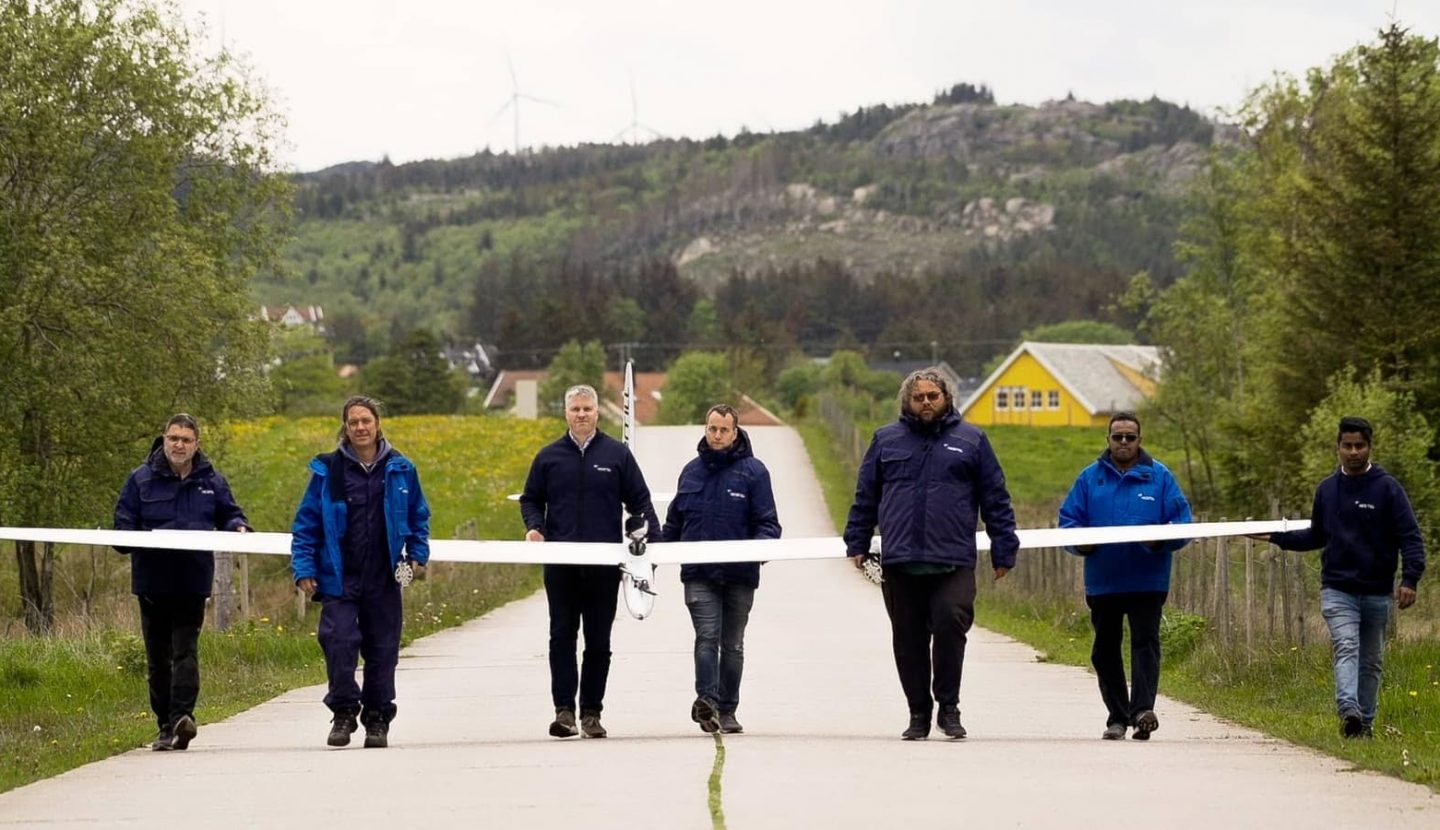Clean energy developer Kitemill continues to demonstrate the future potential of Airborne Wind Energy (AWE) after setting a new flight endurance record – covering more than 500km and five hours of continuous operation – with energy produced via its 20kW pilot plant.
AWE technology targets large untapped wind resources up to a half-mile above ground, where stronger and more consistent winds can be harnessed with lower carbon intensity, compared with other renewables – generating greater energy yields at lower cost.
Kitemill’s KM1 pilot system consists of a kite, tether and ground station. During production phase, the kite flies downwind in a circle building up lifting force by pulling on a tether, which is reeled around a winch at ground level and linked to an electric machine. The automatic system constantly seeks optimal altitude and wind speed.
Established in 2008, the Norwegian firm has spent more than a decade building world-class knowledge, IP and assets, with acquisitions including Scotland’s Kite Power Systems (KPS) and Dutch firm eKite, plus significant investments from En-Vision Europe Limited Ignatia and the European Innovation Council.
Now preparing a new Crowdfunding round (*Get early access to invest in Kitemill (crowdcube.eu)), the latest performance metrics reveal rapid progress at the Lista demonstration site.
Kitemill CEO Thomas Hårklau said it also marks another major milestone, surpassing 500 test flights with its KM1 pilot system. “Our technology performed efficiently and robustly, despite challenging weather conditions,” he said. “The five hours and 32 minutes of uninterrupted operation included one landing due to low wind. When the wind picked up, the kite relaunched and continued until sunset. The next day, the kite flew for an additional 3hours before landing, accumulating a total flight trajectory of over 500km with an average wing load exceeding 3,500N, corresponding to an aircraft with a 350kg payload. This is a strong performance offering an impressive benchmark when compared to general unmanned flying operations around the world.
“Operating at heights between 300 and 500 metres we are able unlock vast areas of high-capacity wind power, ensuring a stable energy output. As such, our technology is viable in many more sites compared to established wind technology. This will be an especially important factor in years to come as countries struggle to source suitable wind farm locations. In addition, AWE offers increased energy per square km, with around five times the energy density of conventional wind. It also has significantly lower CAPEX – using just 10pc of the materials required by wind turbines of the same capacity. Another considerable benefit is the ultra-low environmental impact. Barely visible from the ground, there is minimal environmental interference from construction through to operation. With less investment tied up to any given site, AWE technology can also be easily relocated during its lifespan.”
According to a recent white paper by BVG Associates, on behalf of Airborne Wind Europe, at utility-scale generation, the AWE market could grow to around $100bn (€92.39bn) by 2035–40 and several hundreds of billions soon after. Based on the assumption that the AWE market follows the same trend as the established wind turbine market 40 years ago, BVG further estimates the cumulative global deployment of AWE could reach 5GW by 2035 and at least 177GW by 2050.
It comes as Kitemill’s operational experience grows exponentially, with flight time doubling in 2021 and more than doubling again in 2022. In the last 12 months, the company’s technology also secured third-party verification from Everoze and DNV. Momentum is being mirrored politically, with Norway now including airborne wind energy in the national energy research strategy.
Kitemill CFO Asgeir Løno said AWE has a unique ability to accelerate the clean energy transition. “AWE could eventually supply as much as 20% of the world’s electricity needs,” he said. “It offers a truly novel approach to renewable energy, accessing stronger, more consistent winds at higher elevations to help strengthen the grid, while also reducing impacts from land use and resource extraction. At Kitemill, we remain on a steep trajectory. We believe our technology will play a vital supporting role in the push to decarbonise the global economy by 2050, ultimately providing energy at a lower cost than established wind technology. We are inviting people to join us on this journey right now, through Kitemill’s latest crowdfunding initiative, as we prepare to help Europe and other areas of the world accelerate net-zero electricity production and security of supply.”
Kitemill’s last crowdfunding campaign closed in January 2023 and was oversubscribed by NOK 1 million.
For more information Phone: +47 468 37 117 or e-mail: info@kitemill.com





